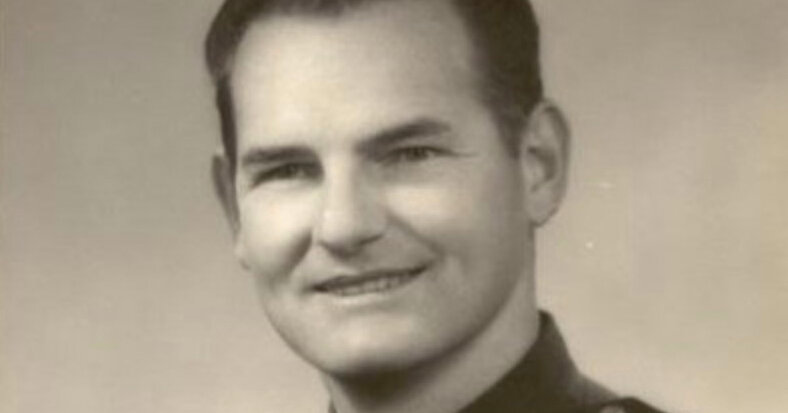In This Atlanta Suburb, Teens Taste Freedom at 10 M.P.H.
In Peachtree City, Ga., golf carts are everywhere, giving young people in particular an early chance to take life by the wheel.
WHY WE’RE HERE
We’re exploring how America defines itself one place at a time. In the car-dependent sprawl of the Atlanta suburbs, Peachtree City, Ga., has gone all-in on an alternative (available in electric or gas).
Rick Rojas and Gabriela Bhaskar covered many of Peachtree City’s 100-plus miles of pathways in a rented golf cart.
A regular golf cart has no turn signals, no radio, no protection from the elements other than a thin roof and rain flaps. Press the pedal to the floor and it can maybe — maybe — accelerate to 15 miles per hour.
Still, grip the steering wheel. Feel the wind and the sun on a crisp afternoon, the cart hugging the curves as it picks up speed on a smoothly paved pathway, one of your parents beside you, your friends hanging on in the back seat. If you are 12, commanding that cart feels like power. It feels like freedom.
“You had that little sense of adventure,” said Caroline Lawson, 17, thinking back a few years to her earliest experiences driving a golf cart. “It’s just that little sense of, ‘Whee!’”
That’s growing up in Peachtree City, Ga.
Parents talk about the quality of the schools. Or they describe the appeal of finding what feels like a small town, with access to lakes and woods to explore, less than an hour from the heart of Atlanta (traffic permitting).
But if there is one thing that defines Peachtree City, it is golf carts. The city has roughly 13,000 households and some 11,000 registered carts. Its logo? A peach and a golf cart.
Communities filled with golf carts tend to have older populations, people who have the time and inclination to ride 18 holes and then stop by the clubhouse for a drink.
Peachtree City has retirees, and it has golf courses. But the city is largely built around families, meaning carts figure prominently in the childhoods of its youngest residents.
Once children turn 12, they are allowed to drive a cart with a licensed parent, grandparent or guardian in the front seat. At 15, once they have their driver’s permit, they can go off on their own.
More than 100 miles of paths weave through the place, linking subdivisions and shopping centers. Just about everything is in reach by cart: restaurants, three lakes, Walmart and Home Depot, the very Instagrammable boba spot filled with teenagers. The high school has a parking lot just for students’ golf carts.
The only attraction beyond the paths, Caroline lamented, was the movie theater.
Kym Bushmire left Peachtree City after high school, then came back to raise her four children, finding it much more interesting than she had realized.
When her children were younger and they had time to kill, they would climb into the family’s cart and determine their destination by flipping a coin at every turn.
Heads, they would go right. Tails, left.
“We got lost a lot,” she said.
One of her sons would go down for a nap only if she took him on a cart ride. Her oldest delayed getting his driver’s license until he was 18. The cart was sufficient.
The ever-expanding spread of Atlanta and its suburbs is heavily reliant on cars, fused together by a tangle of freeways that swell to 15 lanes in some places yet still get so clogged that traffic can hardly move.
Many residents know the congestion well from their commutes and find that Peachtree City offers a rare reprieve from car culture: a contained community where they can run errands or go a weekend without needing anything more than a golf cart, which is cheaper than a new car but not by much. (Dealers in Peachtree City have new carts starting at around $9,000, and the prices can go up steeply from there.)
“I think that I drive my golf cart more than my car,” said Amy Smith, who has a deluxe model to accommodate her husband, three children and 65-pound dog.
The carts provide more than convenience. Many believe that the paths — which are dominated by carts but can also be used for cycling, running and dog walking — forge human connections, drawing people out of their homes and nurturing conversations between neighbors.
“If someone pulls over in a golf cart, the next 10 people are going to stop,” making sure they are not lost or broken down, said Kim Learnard, Peachtree City’s mayor.
Peachtree City is a master-planned community, but its elaborate network of paths was not part of the original design when the city was chartered in 1959. It grew organically over the years and evolved into being core to the city’s identity.
Melissa Powell arrived in 2020, in time for her daughter to start elementary school, the family’s primary reason for moving from another Atlanta exurb. Her parents just relocated to Peachtree City, and her sister wants to join them.
On a recent Sunday afternoon, Ms. Powell and her family pulled over their cart to relax in the shade by the lake. They were enjoying what had lured them to Peachtree City beyond the schools: convenient access to nature and family, an easygoing vibe.
“The only drawback,” Ms. Powell said: “The teenagers. They come flying down these paths, especially around the corners.”
A predictable side effect, perhaps, of giving inexperienced drivers a vehicle and a little leeway. Some drive too fast or cut corners too close and can cause accidents or topple their carts.
Sometimes, the consequences have been serious, including at least one instance where, lawyers said, a 15-year-old sustained a severe brain injury. The Peachtree City Police Department said in 2017 that teenagers were responsible for 67 percent of golf cart-related collisions in the last quarter of 2016, according to The Atlanta Journal-Constitution.
The local police cannot enforce speed limits because carts do not have speedometers, Ms. Learnard said. Still, residents say, the police are as much of a presence on Peachtree City’s paths as they are on the roads, as city officials try to minimize the risks that golf carts can pose. (A nationwide study by Children’s Hospital of Philadelphia released in 2021 found that the number of golf cart-related injuries among minors has steadily increased in recent years, though most are minor.)
Ms. Bushmire has felt confident allowing her older children the independence to run errands for her and get themselves to and from extracurricular activities. But she has used encounters with other young people driving recklessly as teachable moments.
“Don’t be that driver!” she has told her children. “You see how awful that was?”
Her daughter Rebekah, 17, and her friends are in high school. When they notice a friend’s cart in a random parking lot, they leave little notes telling them hello. On chilly days, they share a cart and huddle together to stay warm.
“It definitely helps us mature a lot faster,” Caroline, who is one of Rebekah’s friends, said of the carts and the accompanying sense of freedom.
“I don’t know if that’s always the case!” Ms. Bushmire replied.
Still, the high schoolers believe that the carts help them ease into maneuvering cars.
“You already have the feel of the steering wheel, the gas pedal,” Caroline said.
Rebekah agreed.
“I was less nervous to get in the driver’s seat,” she said.
“Says the driver who wouldn’t go over 30 for the longest time,” her mother interjected.
That afternoon, Rebekah, Caroline and another friend, Catherine Amendola, stuck to a golf cart. They cruised behind houses, through woods, alongside a lake and into a tunnel, emerging in a packed commercial district.
As she cruised through the parking lot, Caroline noted that she did not spend as much time traveling by golf cart as she once did.
She loved riding the paths, no question. But she had her driver’s license now and a car. She was ready to go places a golf cart could not take her.
Gabriela Bhaskar contributed reporting.


